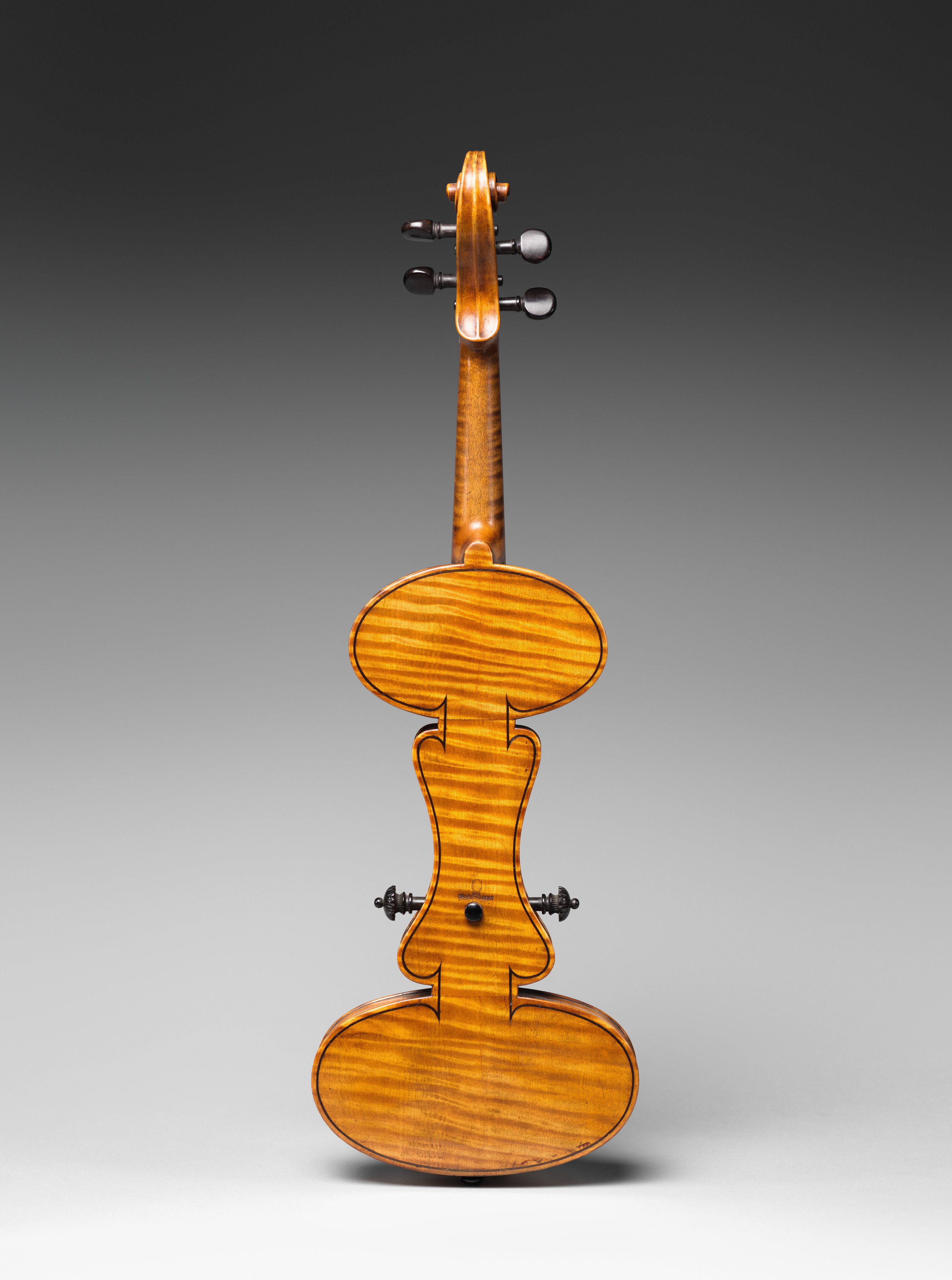Mute Violin
Charles Francis Albert, Sr. American, born Germany
Not on view
Mute violins have been used as practice instruments and for special acoustical effect since the seventeenth century. Leopold Mozart used the term "Brettgeige," or "board violin," to describe a mute violin consisting of a curved board without a soundbox. Patented in 1886, this unusually shaped mute violin has a body made entirely of maple, a wood that does not vibrate freely. The bridge height can be adjusted by two pegs located on either side of the body.
This image cannot be enlarged, viewed at full screen, or downloaded.
This artwork is meant to be viewed from right to left. Scroll left to view more.



